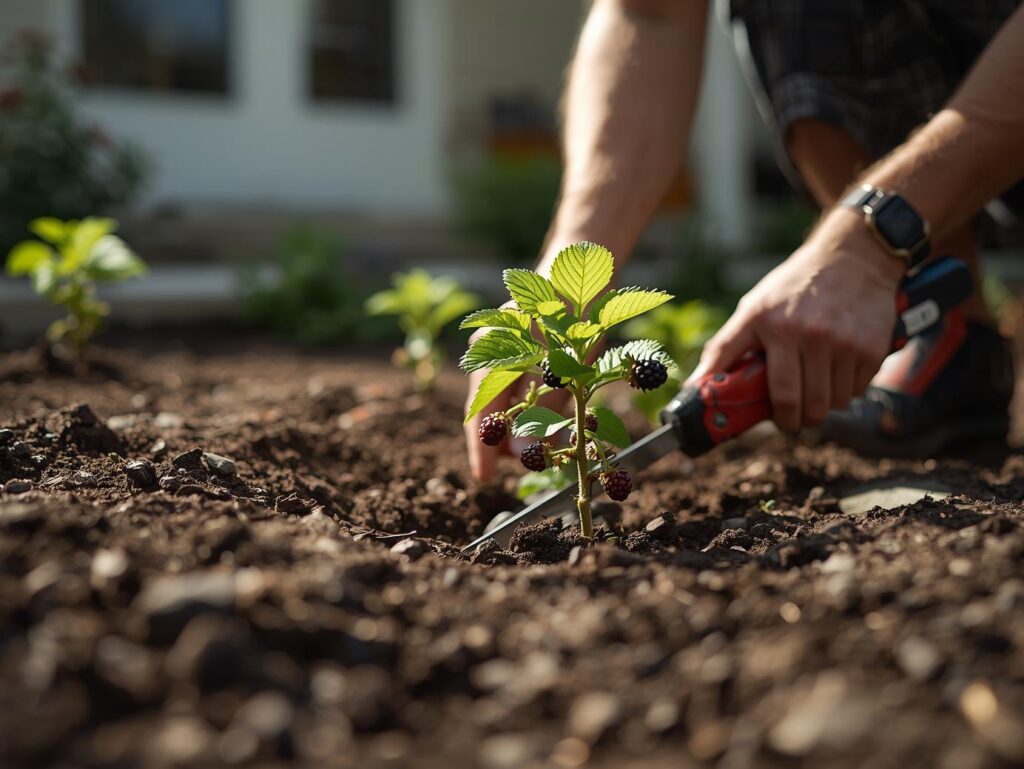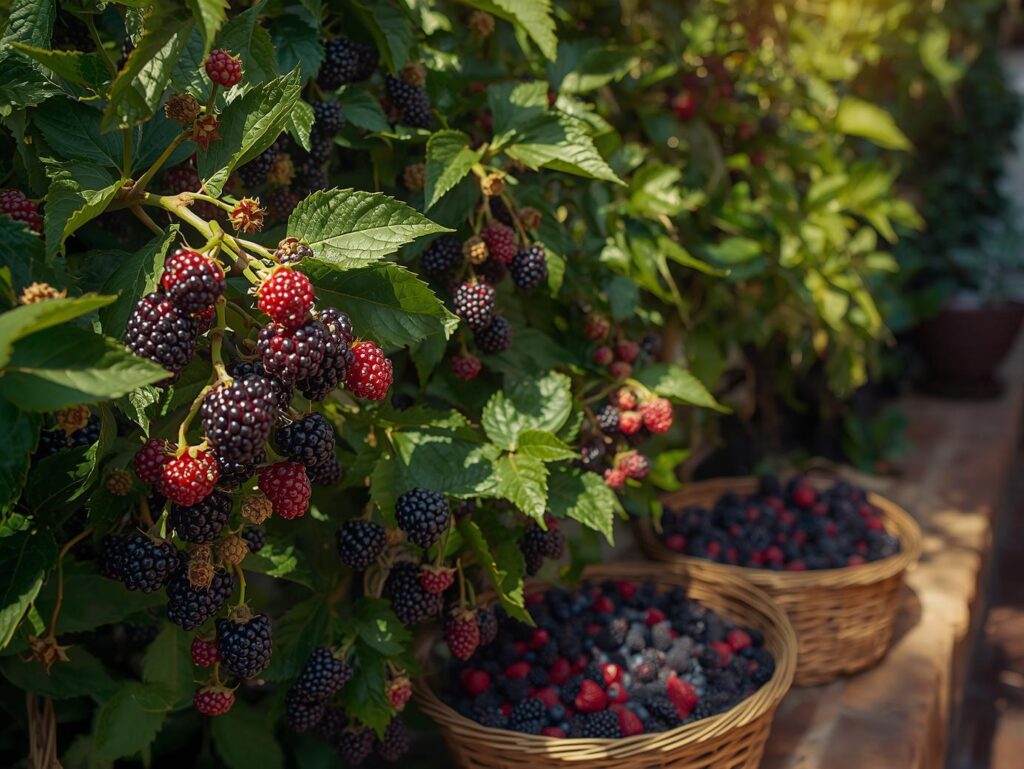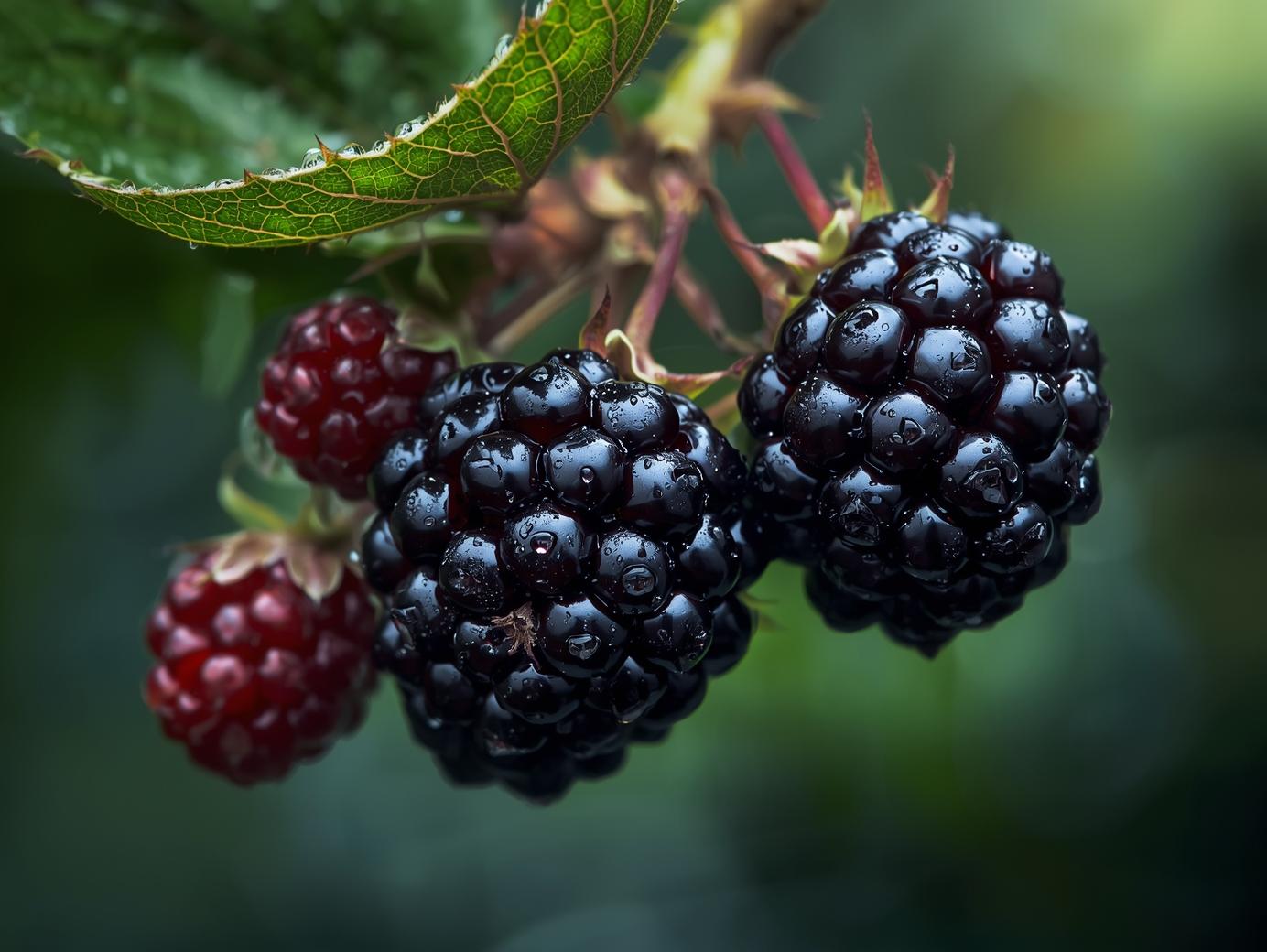Blackberries are a popular and nutritious fruit that can be grown effectively in home courtyards across many regions of the United States. They are well-suited to small spaces and offer gardeners the satisfaction of harvesting fresh berries throughout the growing season. With proper care and attention to the essential steps of cultivation, blackberry plants can thrive and produce abundant fruit. This article outlines the key factors to consider when growing blackberries, from soil preparation to harvest.
Soil Selection
Blackberries prefer well-drained, loamy soil that is rich in organic matter to support healthy root development. A slightly acidic to neutral soil pH, ranging from 5.5 to 7.0, is ideal for optimal nutrient uptake. Heavy clay soils or areas with poor drainage can cause root diseases and stunt growth, so amending the soil with compost or organic matter before planting is beneficial. Ensuring good drainage is particularly important because blackberry roots are susceptible to rot if waterlogged.
Site Preparation
Choosing the right location and preparing the site properly are crucial steps before planting blackberry bushes. Blackberries thrive in full sun, requiring at least six to eight hours of direct sunlight each day for maximum fruit production. The planting area should be cleared of weeds and debris, and the soil loosened to a depth of about 12 inches to improve root penetration. If you are planting in containers for courtyard gardening, select a large container with drainage holes and fill it with a well-draining potting mix enriched with organic compost.
Planting
The best time to plant blackberries is in early spring while the plants are still dormant. When planting in the ground, space the bushes about three to four feet apart to allow ample room for growth and air circulation. Dig holes large enough to accommodate the root system without bending or crowding the roots. Place the plants at the same depth they were growing in their nursery containers, backfill with amended soil, and water thoroughly to settle the soil. For container planting, ensure the pot is sufficiently large to accommodate root growth and position the container in a sunny spot.

Watering
Consistent watering is essential, especially during the establishment phase and the fruiting period. Young blackberry plants require regular deep watering to encourage strong root development, typically two to three times a week during dry spells. Mature plants should be watered once a week or as needed to keep the soil moist but not saturated. Overwatering should be avoided as it can promote root diseases. Applying mulch around the base of the plants helps conserve moisture and regulate soil temperature.
Fertilizing
Blackberries benefit from balanced fertilization to support healthy growth and fruit production. Applying a nitrogen-rich fertilizer in early spring stimulates vigorous cane development. Follow-up applications during the growing season can promote ongoing growth and increase yields. Organic fertilizers such as composted manure or fish emulsion improve soil fertility and structure. Avoid excessive fertilization late in the season, as it may encourage late growth that is vulnerable to winter damage.
Pruning and Training
Proper pruning and training techniques are vital to maintaining healthy blackberry plants and maximizing fruit yield. Prune in late winter or early spring before new growth begins by removing dead, weak, or damaged canes. For erect blackberry varieties, select the strongest canes and remove the rest to prevent overcrowding. Trailing varieties benefit from training on a trellis or support system to keep canes off the ground, improving air circulation and ease of harvest. Summer pruning can help manage growth and improve sunlight penetration.
Pest and Disease Control
Blackberries can be affected by a range of pests and diseases, including aphids, spider mites, cane borers, and fungal infections such as powdery mildew and rust. Regular inspection of plants for signs of damage or infestation is important to catch problems early. Implementing good cultural practices like proper spacing, pruning, and sanitation reduces disease risk. Organic treatments like neem oil or insecticidal soap can be used safely in home gardens to control pests without harming beneficial insects.
Fruiting and Harvest

Blackberry plants typically begin producing fruit in their second year after planting. The berries mature during the summer months and are ready to harvest when they are fully black, plump, and easily detach from the plant. Regular harvesting encourages continued fruit production throughout the season. Handle the berries gently during picking to avoid bruising, and refrigerate promptly to maintain freshness. Homegrown blackberries can be enjoyed fresh, frozen, or used in a variety of recipes.
